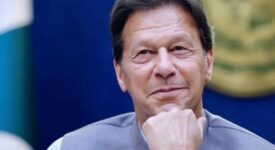Pakistan’s general election ended in votes tainted by violence, instability in politics, and questions about transparency, with no party winning a majority in parliament.
The country faces many issues that must be resolved quickly, such as negotiating a new International Monetary Fund program to keep a struggling $350 billion economy afloat. Former prime ministers and fierce rivals Nawaz Sharif and Imran Khan both declared victory, adding to the uncertainty.
When the National Assembly is called in the next few days, a prime ministerial candidate has to show a simple majority of 169 seats in the assembly.
two, together with other parties like the MQM-P and JUI-F, form a coalition government where Nawaz or his brother Shehbaz Sharif serves as prime minister and other parties are granted significant roles. Of the 336 seats in the assembly, 266 are chosen by direct election on election day.
Additionally, 70 seats are set aside, 60 of which are designated for women and 10 for non-Muslims. These seats are distributed based on the strength of each party in the house, which determines the parties’ ultimate standing in the Assembly.
Here are three possible outcomes for what might occur next:
Deal for PML-N to lead coalition government
To form a majority in Parliament, the Pakistan Muslim League-Nawaz (PML-N), which secured 75 seats, agreed with the Pakistan Peoples Party (PPP), which secured 53 seats.
With Bilawal Bhutto-Zardari as foreign minister and Shehbaz as prime minister, the two parties shared power in government for sixteen months until August.
Independents backed by the PTI take victory
Independent candidates backed by the PTI, who won 93 seats in parliament, joined forces with a smaller party to form a single bloc to meet the requirements for being granted reserved seats. They would be likely to field a prime minister candidate and get closer to a majority as a consequence.
They can also work to have their jailed leader released under an agreement by striking deals with other parties to support the consensus candidate, which also means that Imran Khan’s supporters are in power. Khan cannot hold the position of prime minister.
The party will need to exert a lot of pressure on allies to adopt Khan’s position on politics.
Bilawal aims to lead the coalition government.
No party can create a government without the PPP, even if Nawaz and Imran’s nominees received the majority of seats. The PPP establishes a deal to appoint Bilawal as prime minister, with both parties hoping to keep the other out of office.
Before the voting, he pushed the idea that he would use an unusual approach to help Pakistan escape its many difficulties, something that previous experienced leaders had not been able to achieve.








